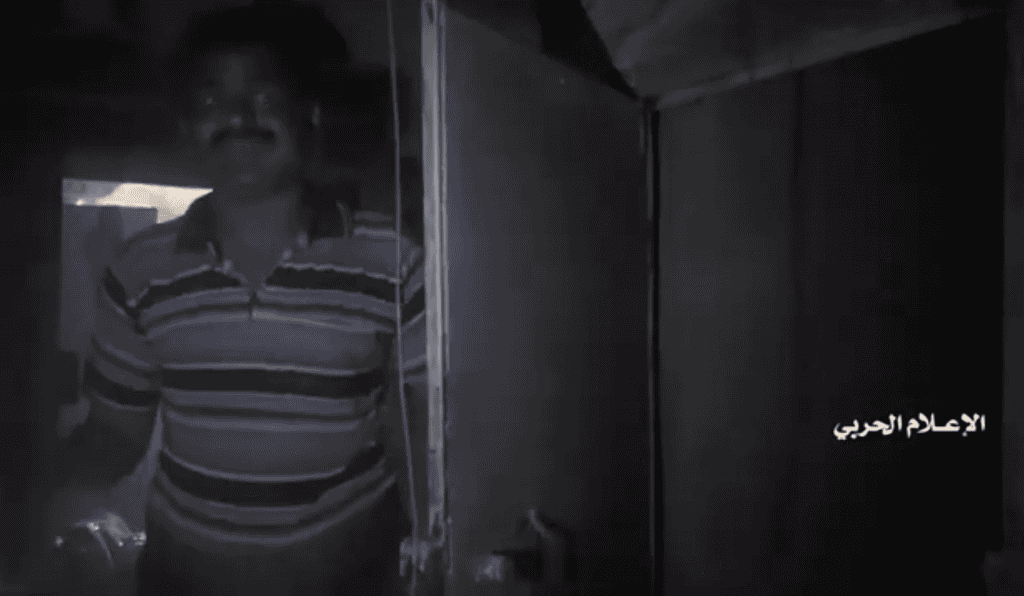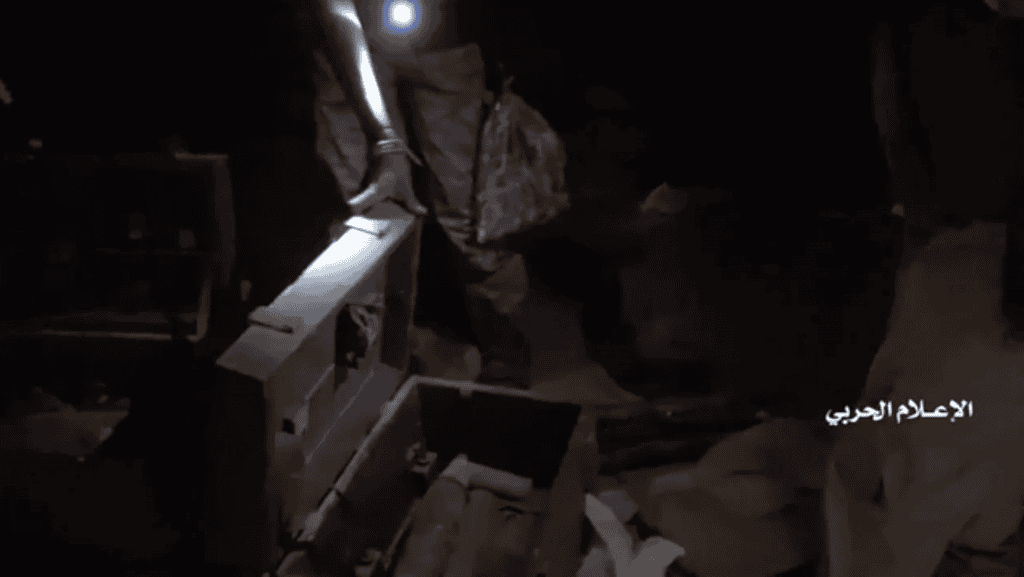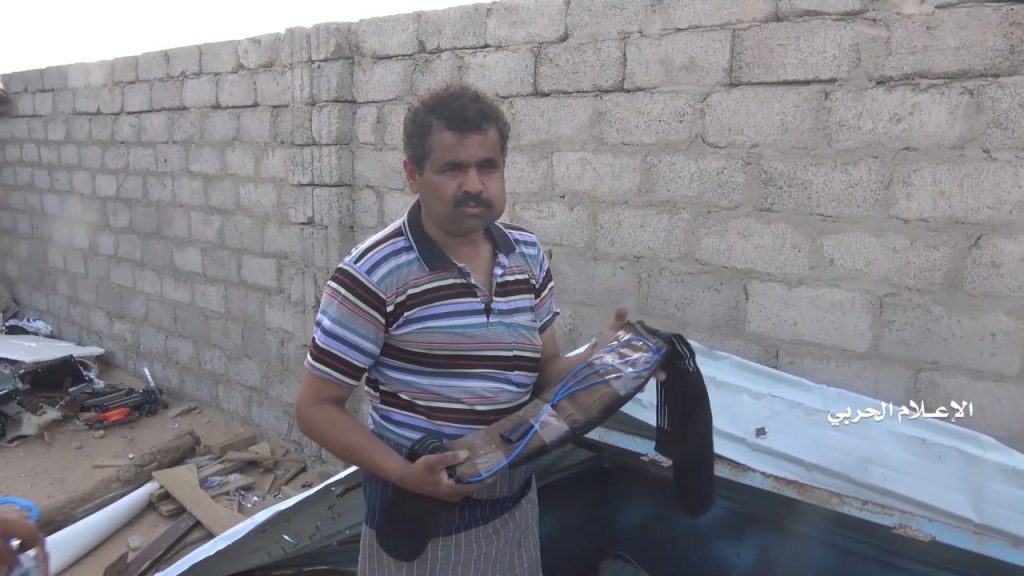
Note: Title and excerpt have been changed to reflect the lack of independent confirmation of the Houthi’s version of events.
In a recent video, the Iranian-backed Houthi insurgents claim to have captured a base belonging to Al Qaeda in the Arabian Peninsula (AQAP) in the Khasaf region of Yemen’s northern al Jawf governorate.
Houthi fighters are shown touring the captured base, which includes underground housing components and an alleged prison. Explosive belts, ammunition, AQAP flags, and other material are paraded by the insurgents for the camera.
The insurgents also go through the library of AQAP’s base, though most of its contents appear quite dated.
This includes religious material, weapons and ballistics manuals, a book written by former al Qaeda general manager Atiyah Abd al Rahman (or Atiyah Allah), several editions of AQAP’s former Al Masrah newsletter (which ceased in late 2018), and internal statements produced by the group.
The latter statements include a undated document entitled “Advice for the users of chat forums” and another document dated for Feb. 26, 2013, which refers to a “statement gathered by the Yemeni ulema [religious scholars] on the endeavor to mediate between the mujahideen and the Sana’a regime.”
The latter statement offers little substance but chastises the “shameful position of the Sana’a government,” which it blames on “projects of the Americans and Gulf scholars.”
The exact details of the capture of the AQAP base remain murky. The Houthis do not provide a date nor any confirmation about a clash with AQAP or if the headquarters was already abandoned. Additionally, no bodies are shown throughout the almost 15-minute film.
Given the capture of documents, material, and other equipment, it is possible that AQAP fighters hastily abandoned the base prior to the Houthis arrival. The insurgent group claimed control over much of al Jawf last month and have steadily conducted operations in the province since.
AQAP in al Jawf
Al Jawf is a traditional stronghold of AQAP. Since 2010, the United States has launched at least 8 drone strikes in the province against AQAP personnel. Despite the airstrikes, the group remains active in the province today.
US airstrikes against AQAP in al Jawf include the September 2011 bombing run that killed Anwar al Awlaki, the American propagandist, ideologue, recruiter, and operational commander, and Samir Khan, an American who ran Inspire Magazine for the group.
The United States also attempted to assassinate Qasim al Raymi, the former head of AQAP, in the province in January 2010. Of course, Raymi survived only to be killed earlier this year in another US drone strike in Yemen’s Bayda governorate.
Several AQAP fighters have been killed in drone strikes in the same Khasaf region of al Jawf. Additionally, the US Treasury Department sanctioned Yemeni tribal commander Al-Hasan Ali Ali Abkar, who is active in al Jawf, for his role in AQAP financing schemes in Dec. 2016.
Abkar, a commander within the tribal pro-Hadi militias in al Jawf, denied being part of AQAP. However, Treasury’s designation gives several contradictory statements.
For instance, Treasury noted that he became AQAP’s overall military commander for al Jawf in 2015. They also note that Abkar was involved in commanding AQAP’s forces against the Houthis in al Jawf and nearby Ma’rib since May 2015.
Perhaps unsurprisingly, Abkar is also close to Al Islah, Yemen’s branch of the Muslim Brotherhood. AQAP has long benefited from its ties to Islah and to the networks established by its leader, Abdul Majeed al Zindani. These networks extend to al Jawf.
AQAP has been weakened in recent years. Since 2015, many of AQAP’s top leaders have been killed in US airstrikes and operations conducted by the Saudi-backed coalition in Yemen. That said the group has remained a viable and lethal branch of al Qaeda’s global network.
Screenshots from the Houthi video, showing an alleged underground prison and weapons cache and a captured suicide explosive belt:










